How to Make Prettier, Longer Lasting Bouquets
It’s always such a long wait for spring’s first flowers. Once they appear, the surge of color, combined with months of pent up flower energy, is almost too much to handle! The best way to cope with this delightful moment of excess is to cut lots of stems and make lots of bouquets. Fill your own house with flowers and give them away to everyone within reach.
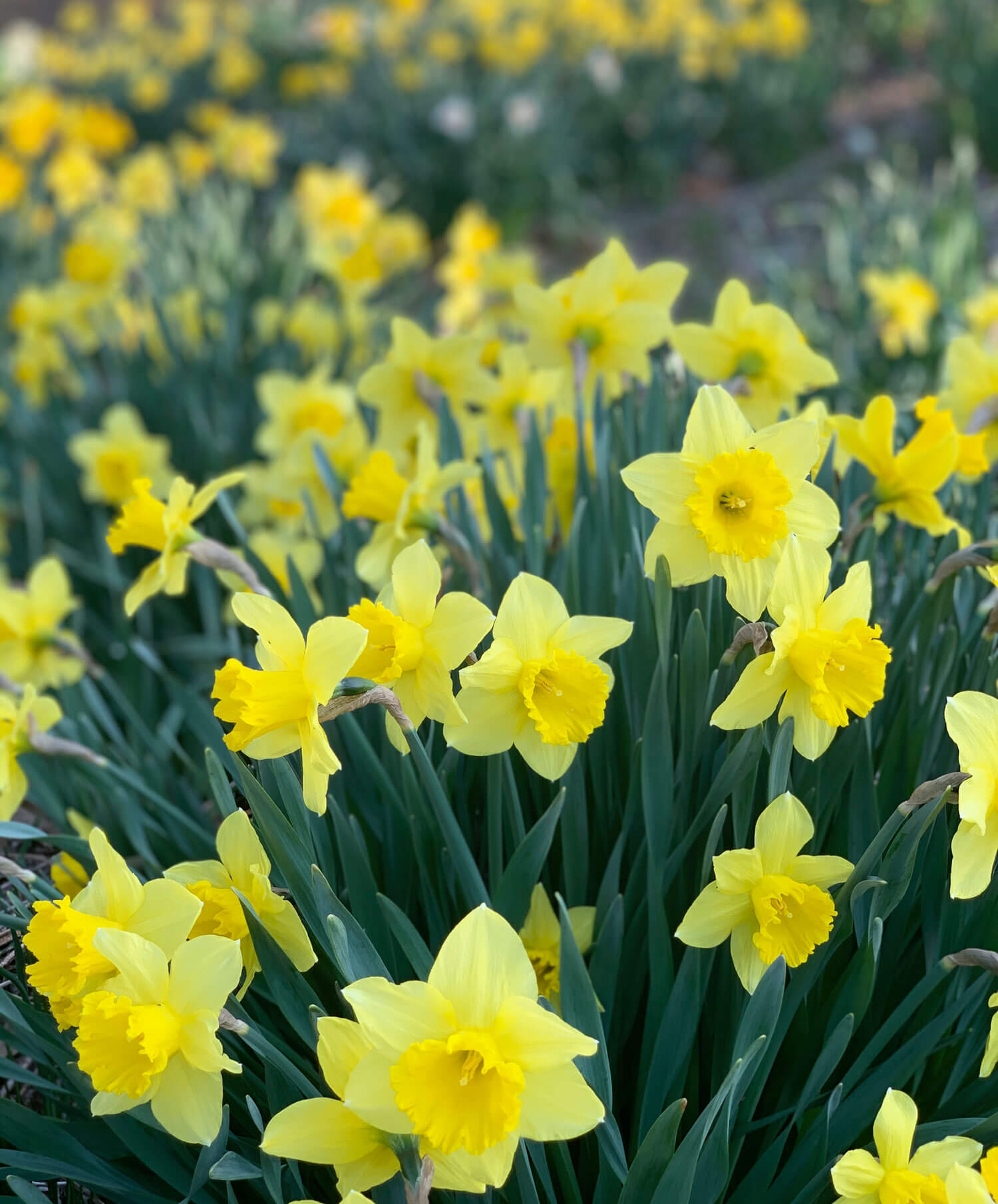
There's no reason to fuss with these arrangements. A fistful of stems in a mason jar does the trick. But sometimes these beautiful blooms deserve a little more. We asked floral designer and avid home gardener Alicia Schwede of FlirtyFleurs.com to share how she gets the most out of her spring flowers. Read on to learn about harvesting techniques, tips for arranging, and how to make the flowers last for as long as possible.
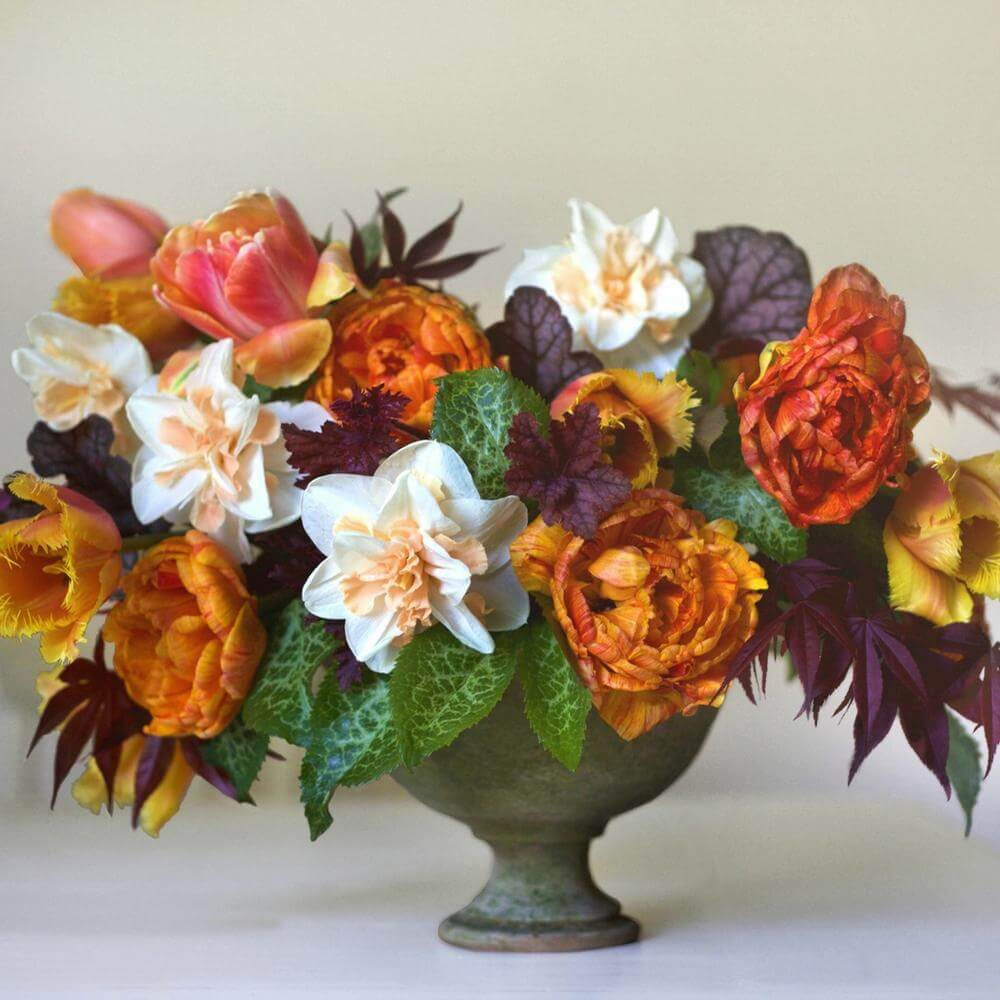 The Baroque Spring Bulb Collection - Designed for us by Alicia Schwede.
The Baroque Spring Bulb Collection - Designed for us by Alicia Schwede.
Tips for Cutting Daffodils
When daffodil blooms first emerge, the buds are held straight up in line with the stem and no color is visible. This is often referred to as the “pencil stage,” and daffodils harvested at this stage will never fully open. If you wait just a couple days, the bloom head will drop, and the color will become clearly evident. This is called the “goose neck” stage, and it’s the ideal time to pick single daffodils. Double daffodils should be harvested a bit later, when they are half open.

A daffodil is ready to pick once it reaches the "gooseneck stage".
Harvest daffodils by pulling the stems rather than cutting them. It’s best to wear gloves for this task, since some people can experience itching or a rash from the sap they emit. Point your thumb down toward the earth, reach all the way to the base of the stem, and pull straight up. Using this technique ensures the longest stem length, and less sap is released from the stem.
"Freshly cut daffodil stems release a clear, slightly runny sap," adds Alicia, "If you make an arrangement that contains only daffodils, there’s no need for concern. But if that sap comes in contact with other types of flowers, it will damage them. So if you want to combine your daffodils with tulips or any other plant material, you need to stop that sap from leaking out of the stems."
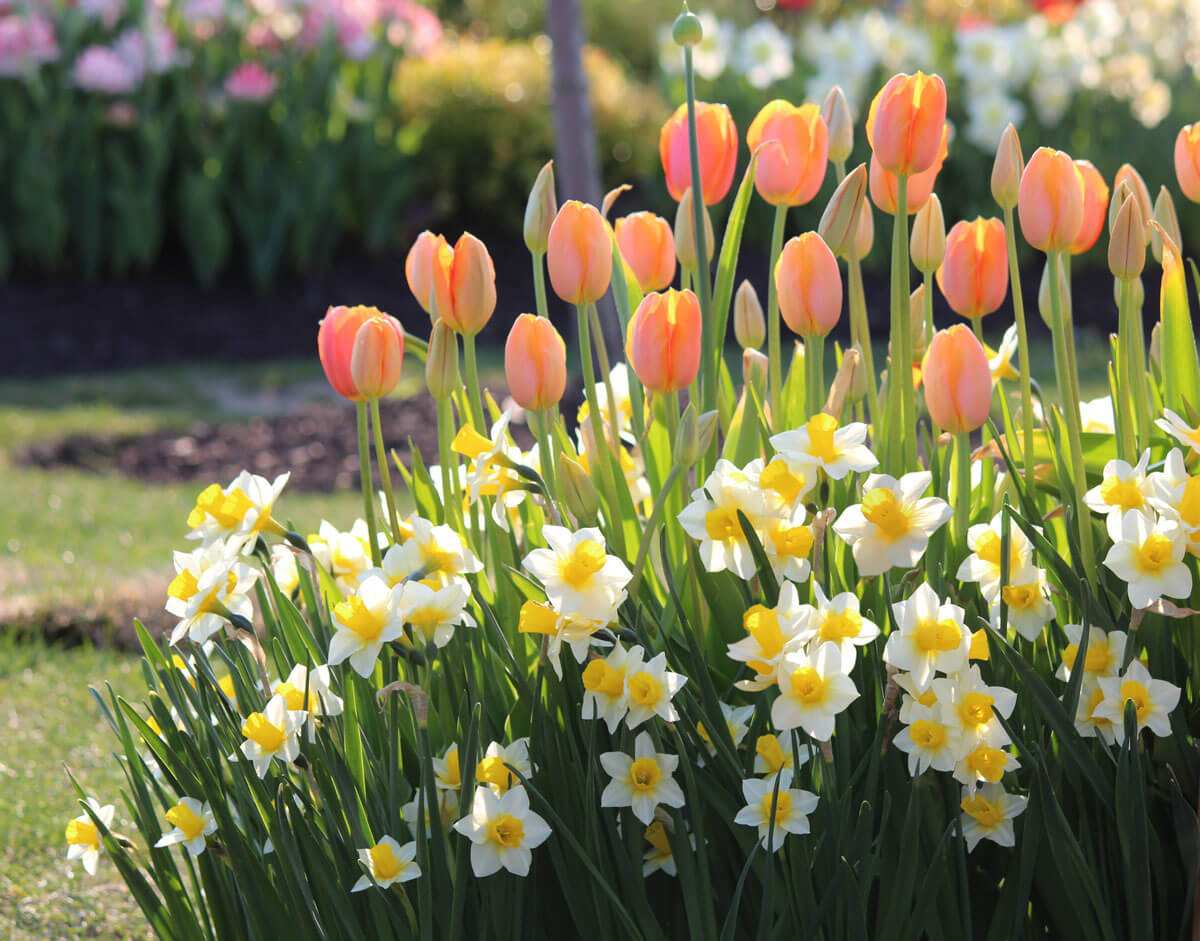
Alicia went on to explain: "Conditioning daffodils is actually super easy. Just cut the stems to the desired length and put them into a container of cool water. After about an hour, you can remove the stems, dump the water and your conditioned daffodils are ready to go. If you have to recut any of the stems, you’ll need to repeat the process, as a fresh cut will release additional sap."
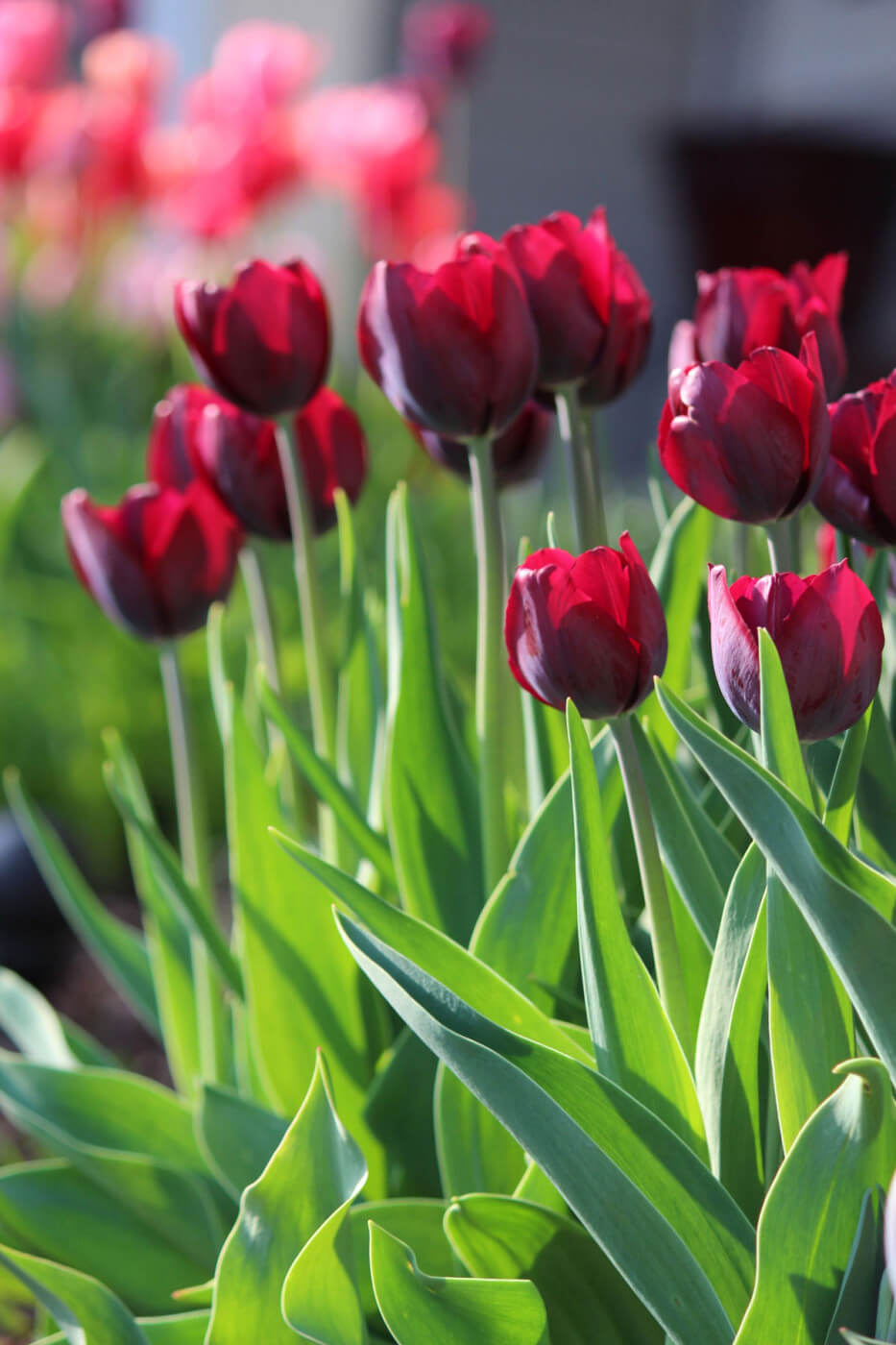
Cutting Tulips
Tulips that are grown for cutting are usually treated as annuals, because the best way to harvest the flowers is to pull them out of the ground with the bulbs still attached. This allows you to store the flowers without water, and also ensures the longest stem length. If your soil is compacted, loosen the area around the tulip bulbs with a pitchfork. Then, reach down to the base of the stem and pull out the entire tulip with the bulb attached.
If you are harvesting tulips for personal use, they can be cut at any stage. However, if you plan to sell the tulips, store them dry in a cooler, or want to ensure the longest vase life from your stems, they should be harvested in bud stage. Single tulips are ready for harvest when the color is evident on the bud. Double and parrot tulips are ready for harvest when the bud is fully colored but not yet open.

Alicia grows lots of tulips in her home garden and loves working with them in arrangements. "Unlike most other flowers, tulips continue to grow after they are cut," said Alicia. "The flowers get larger and the stems can lengthen by several inches. This is actually something I really love about cut tulips. Over the course of a week, the flowers become increasingly expressive as the stems twist and the blossoms splay open. But sometimes that's not the look you're after."
One option is to make your arrangement with tulips that have been cut slightly shorter than the other flowers. Alicia suggests tucking the stems deep into the arrangement, so as they lengthen, they will gradually grow into the correct position. Another option is to make adjustments midstream. Simply remove individual flowers that get too tall, shorten the stems and then replace them.
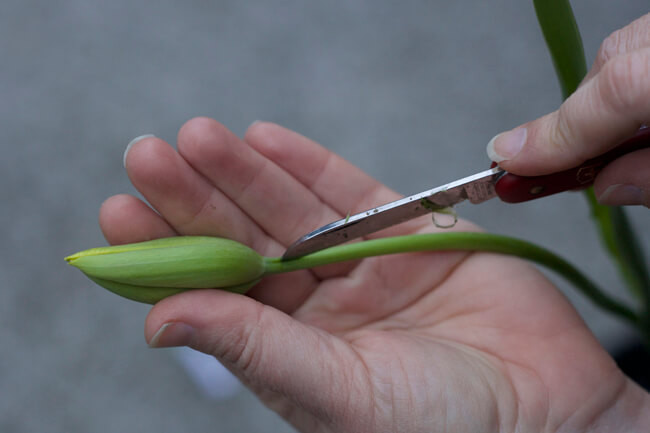
Alicia also offered a third option, a trick sometimes used by professional florists. "If you reduce the stem’s ability to absorb water, the tulip will not continue growing," she said. "All it takes is a sharp paring knife. Make a small vertical cut right below the flower head, making sure to cut no more than 1/3 of the way into the stem."
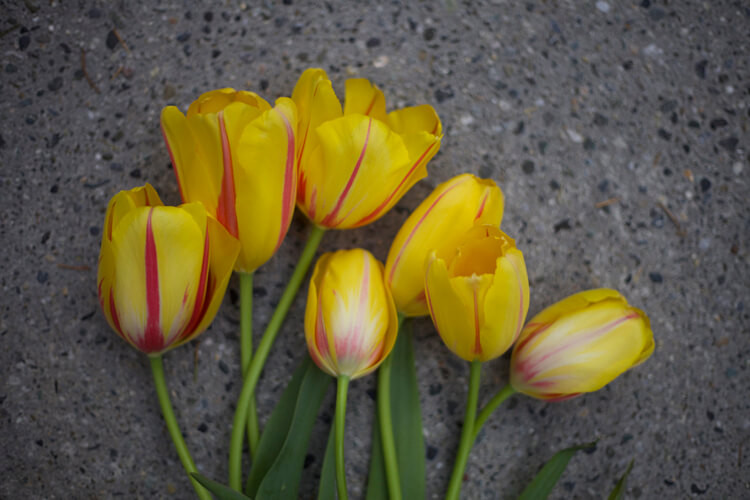
After several days, it's easy to see the impact of piercing the stems. Tulips on the left were untouched. The ones on the right had their stems pierced when still in bud. Another way to minimize the growth of cut tulips is to avoid using floral preservative/flower food. Alicia finds that nutrients in the food only encourage more growth. Instead, she recommends simply arranging your tulips in a squeaky-clean vase filled with cool water.
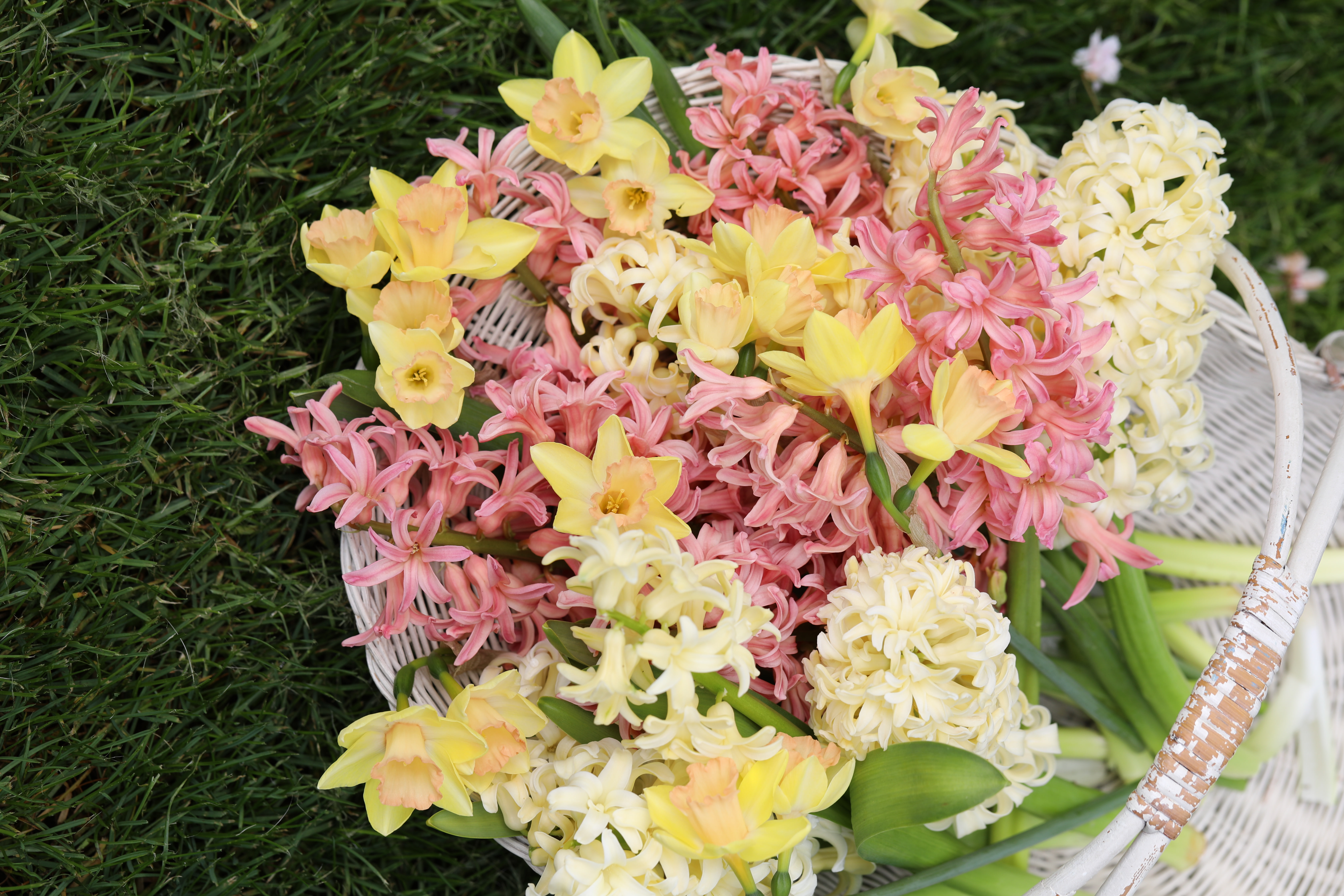
Tips for Cutting Hyacinths
As with tulip, hyacinths that are grown specifically for cutting are usually treated as annuals and the entire bulb is dug up. It's good to wear gloves when working with hyacinth bulbs. For some people, touching the bulbs can cause skin irritation that persists for many hours. For the longest vase life, harvest hyacinths in colored bud stage before any of the florets have opened. Dig up the bulbs with a pitchfork or shovel and snip off the bulb.
If you want to get another year or two of flowers from the bulbs, cut the stem just above the first leaves. Leaving all the foliage intact until it wilts will help the bulb replenish itself.
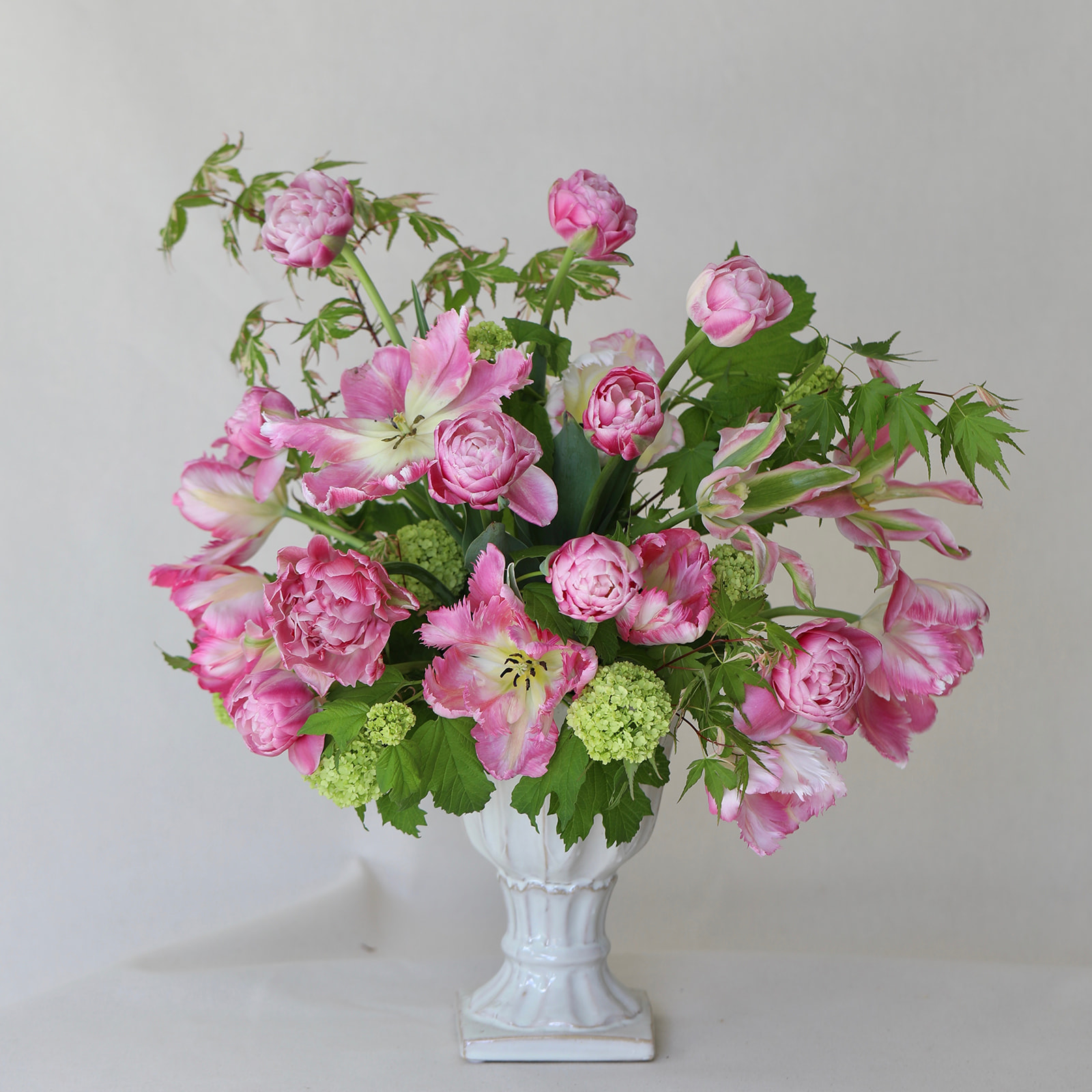
Adding Branches for Support
Tulips, daffodils, and hyacinths can be top heavy. Alicia suggests a creative way to give them some extra support. "Snip off a few branches from the shrubs around your yard and use them as a framework for your arrangement. These budded or flowering branches are beautiful as well as functional. I like how they echo the way the bulbs actually look in the spring landscape. Try using pussywillows, cherry, dogwood, forsythia or viburnum."
It really doesn't matter whether your spring flowers are displayed in a mason jar or a spectacular mixed bouquet. Just be sure to get out there and cut some stems, so you can fully enjoy them before they're gone!
About Alicia Schwede: In addition to running her own floral design studio, Alicia is also a teacher, blogger, writer, publisher, social media maven, floral industry networker, specialty cut flower expert, and avid flower gardener. Follow her on Instagram @flirtyfleurs and at flirtyfleurs.com
Our tulips, daffodils, hyacinths and other spring-blooming bulbs may be preordered starting in April. They will be shipped in fall, at the proper planting time for your growing zone. Shop HERE for our spring-blooming Flirty Fleurs Collections. Shop all our spring-blooming bulbs HERE.
